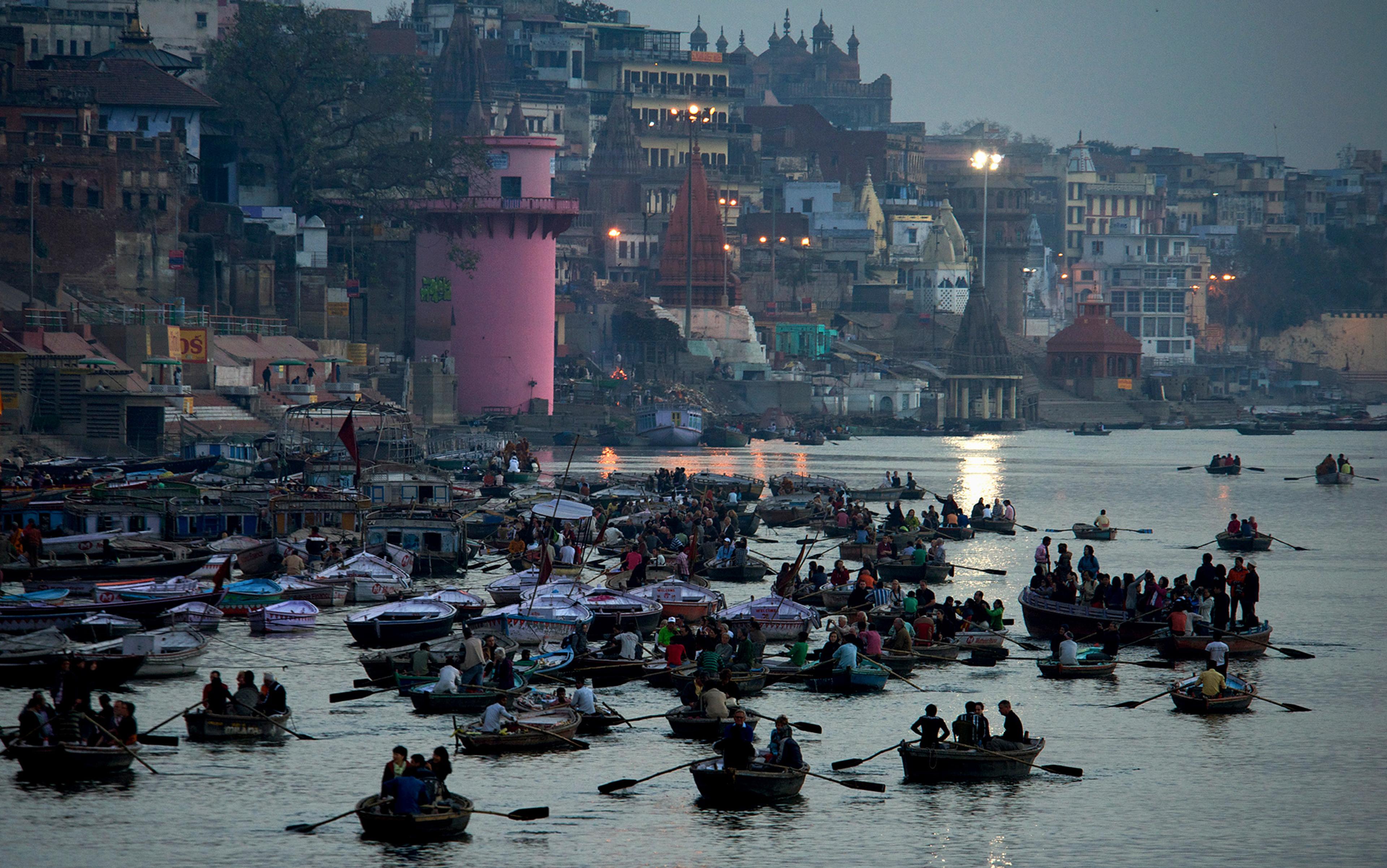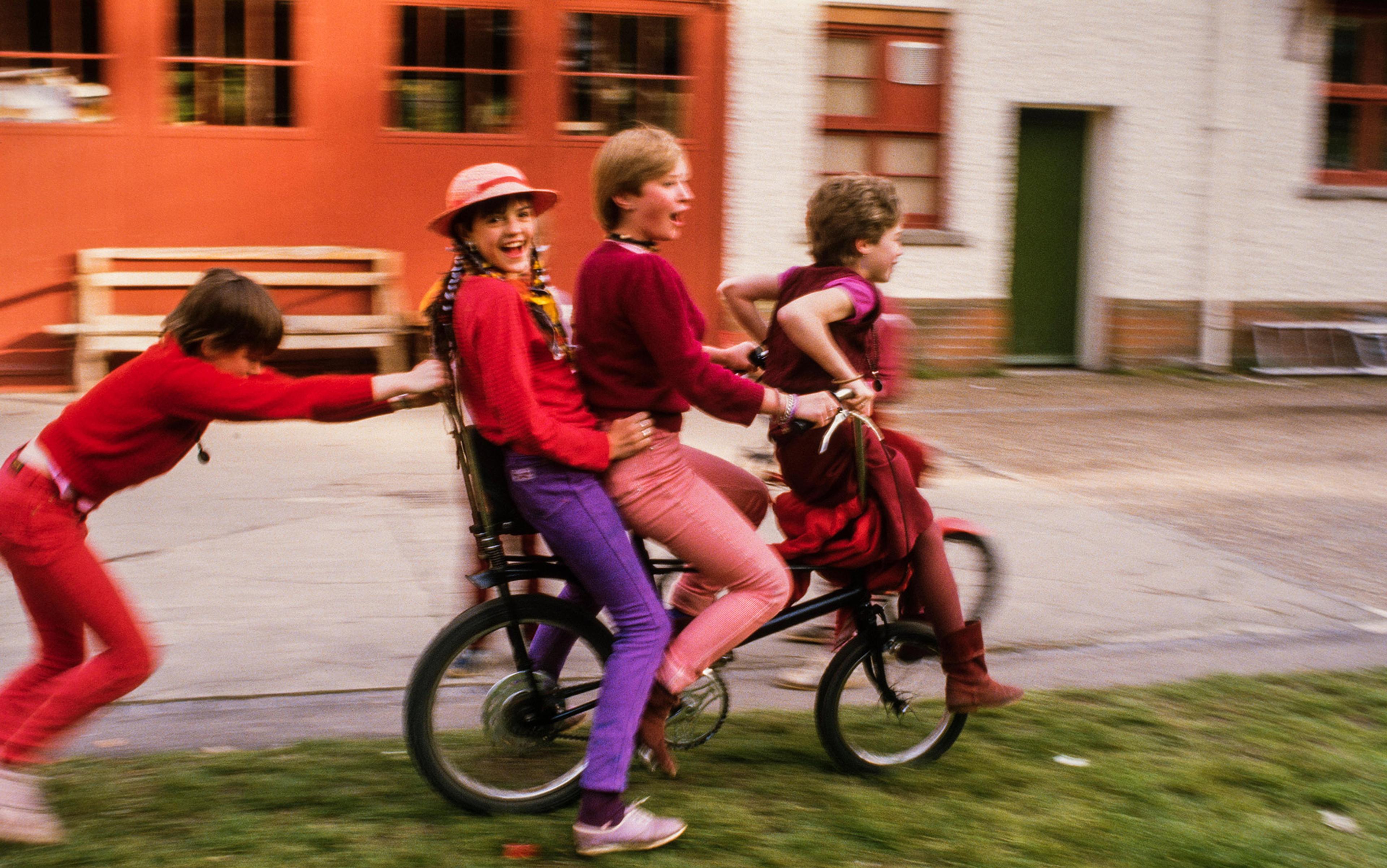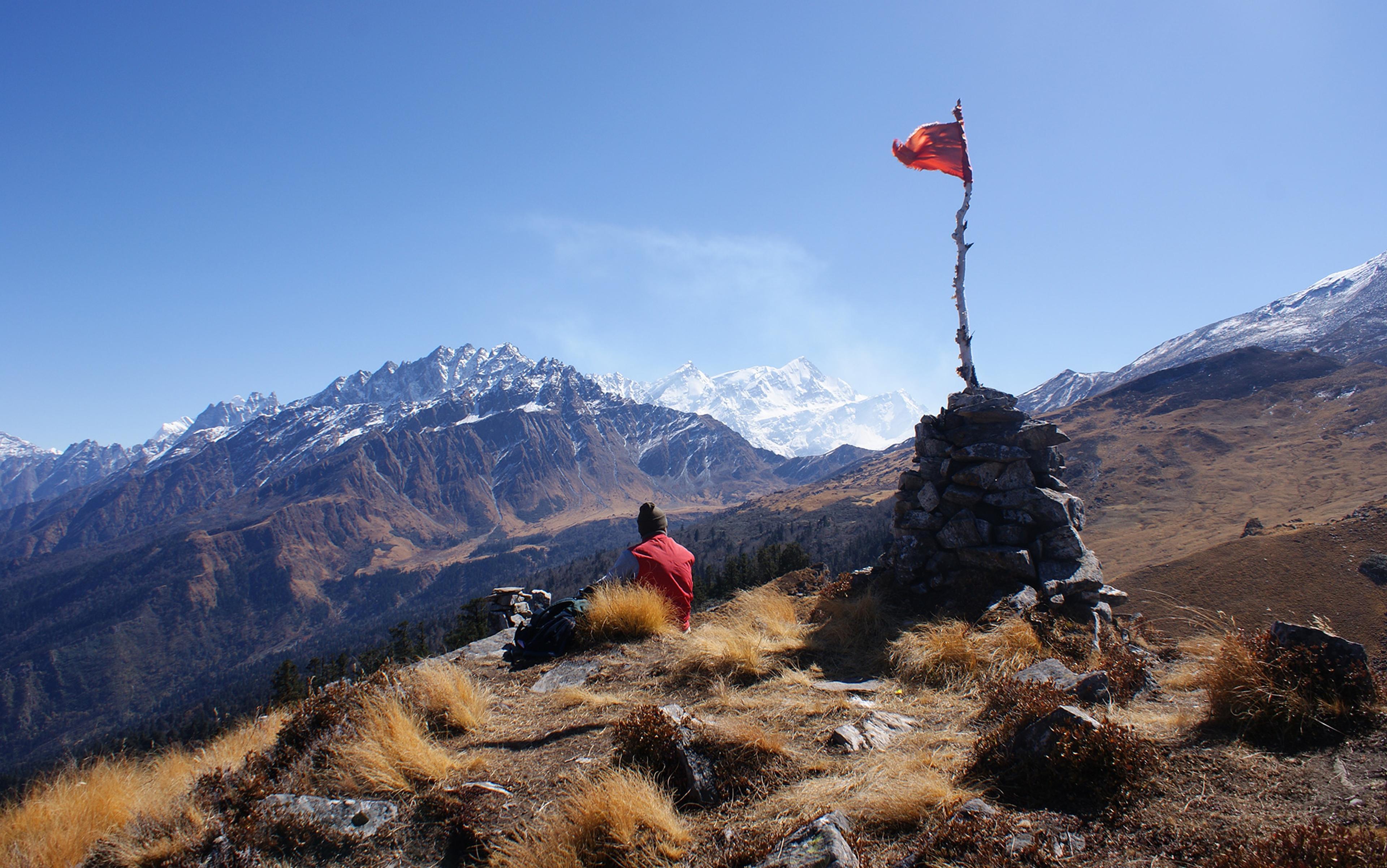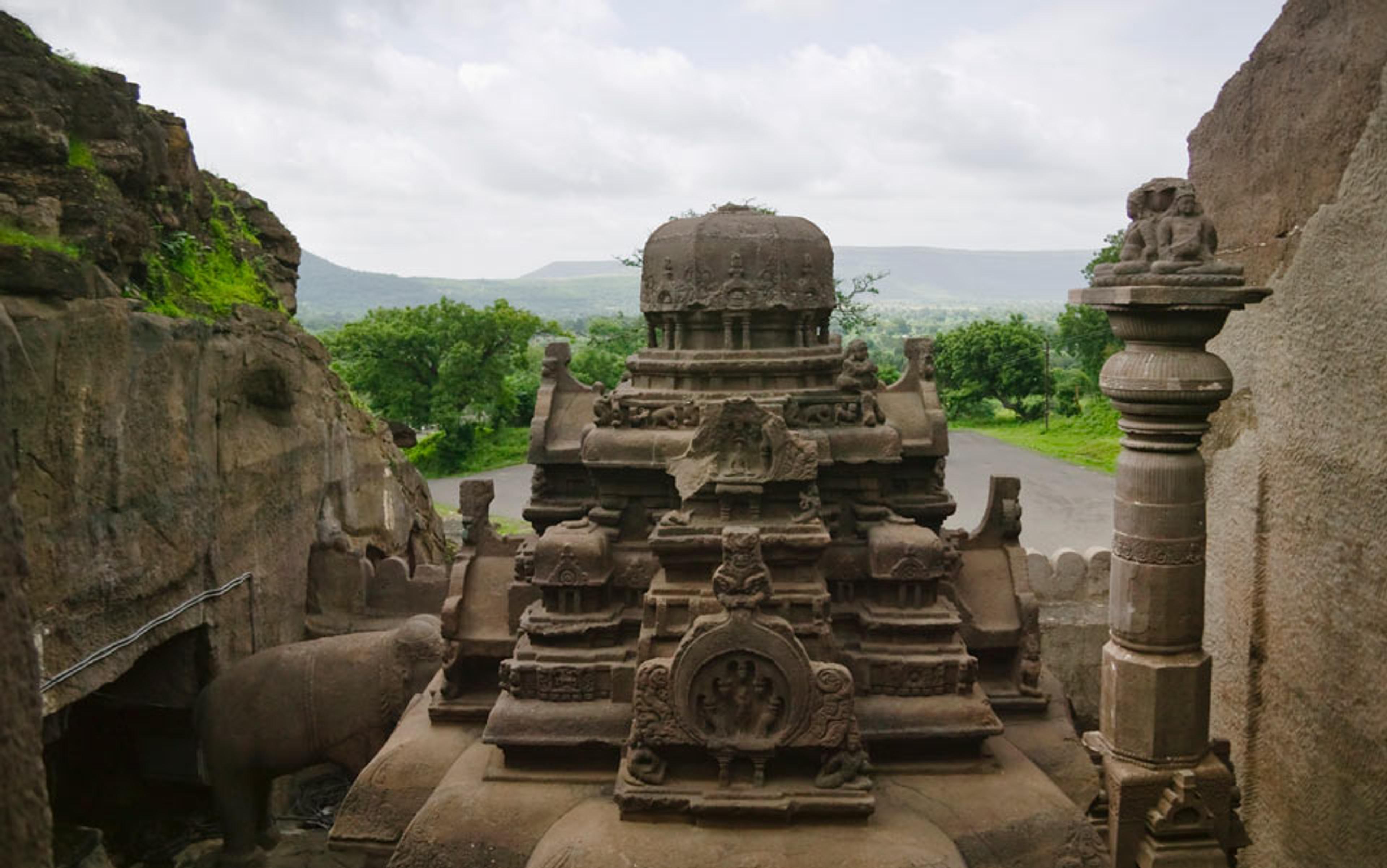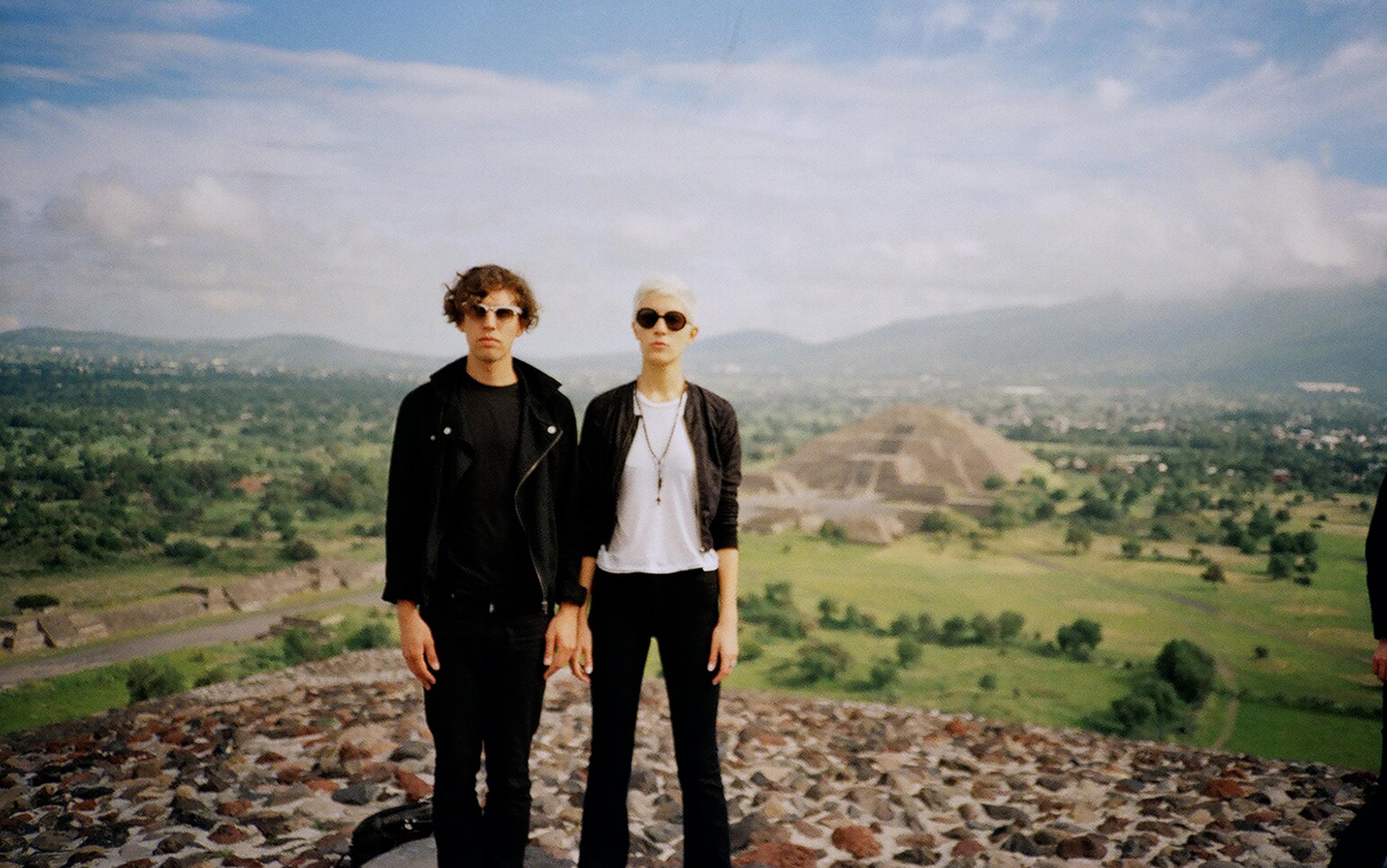On a sweltering summer’s day five years ago, as I returned to my rented home in the holy city of Varanasi in India, I was greeted by an astonishing sight: a blue-eyed white man, dressed only in a thin orange cloth knotted around his waist – the garb of a baba or holy man. Matted dreadlocks snaked down his back and his chest was covered with a white beard rusty with the juice of the betel leaf. Exuding the smell of tobacco and sweat, he was trying to unlock my door. To my protests he responded that Sabine, a Swiss missionary from whom I was subletting the apartment, allowed him to bathe there; but on no account was I to tell Sabine’s Indian landlord, who disliked Shyam Baba – my new roomie’s name, as I later found out – intensely. I allowed him to bathe that day, softening when he revealed that he too was from Toronto. He had no connections in Canada now, though; nothing to draw his eyes to those distant shores.
Later Shyam Baba showed me a shortcut to Assi, the last in a stretch of ghats (stone embankments) on the Ganges, the holiest of India’s rivers, believed to have fallen from heaven, and also now a turgid receptacle for marigold necklaces, buffalo carcasses, plastic cups and human faeces.
I had first come to Assi as an intern sponsored by the Canadian government, placed with a local NGO working to empower women and children. I was young then, and the city startled me with its blessed wells and barefoot children flying kites beside cremation pyres, its opium-fuelled prophets and ragamuffin crooks. Everything I saw seemed to offer the promise of deep and abiding revelation. Here, where the river was mother and goddess and redeemer, I found an enchanted world that defied logic and reason, where every footstep presaged miracles. The magic stayed with me long after I left, and drew me back to Assi four years later to try to understand what it meant to live the good life. Shyam Baba, whom I encountered during my second interlude in Varanasi, must have come on the same quest – or so I thought.
While most of those entranced by Varanasi are, like myself, transients in the city, some have become permanent implants in its social fabric. When Shyam Baba came to Assi in the 1970s, he cast his Canadian passport into the Ganges, and assumed a place among the denizens of the city’s lanes. No one knows his real name or precise age, but he is a curiosity among the expats, some of whom started a Facebook group in his honour: ‘Shyam Baba rocking his way to enlightenment.’
For the past 40 years, Shyam Baba has lived off the charity of the few foreigners who have taken pity on him. These days he admits that the sight of the Canadian prime minister Justin Trudeau in the Indian newspapers, visiting a Sikh temple or at the Calgary Stampede, opens a link to the past: to the halcyon days of Pierre Elliott Trudeau, when Shyam Baba still lived in Canada. Sometimes odd memories surface, like his joy at getting his first baseball bat at the age of four; for a while he follows the memory. But mostly, thoughts of Canada no longer furnish his mind.
‘I’m a soul supposed to go to God,’ he tells me. ‘God has ordained me. I have no people and no property so I have nothing to look back to, which is good for me.’ When the United Nations named Canada the best country to live in, he had a word or two with God, he says with a laugh. ‘But that’s purely on a material level.’
While Shyam Baba remained a somewhat elusive figure, Peter C – a 44-year-old freelance translator and tour guide – was easier to befriend, and I spent many fascinating hours with him. After graduating from McGill University in Montreal in the late 1990s, Peter came to study Indian philosophy at Banaras Hindu University and stayed when he realised that he could eke out a simple life editing books and teaching English to Koreans. In those days, Assi was a sweet local place with no cars, where it was still acceptable to be poor, he tells me. The only rules that were imposed were within the home. If you are a foreigner, Peter explains, Varanasi does not give a damn about you unless you are violent or a missionary – or try to get close to the local women.
‘People who are defined as social detritus are attracted to the anarchy here,’ Peter explains. ‘The people who hate it here are people who love rules, the application of social rules. These are the people who freak out if there is cow shit on the ground. Everybody else is fine.’
I suppose I must love rules a little bit: back again after another five-year hiatus, the shit on the ground certainly bothers me. As I cautiously pick my way through the unruly streets, on my way to the main thoroughfare running through the neighbourhood, I spot Shyam Baba and Peter again. Shyam Baba, now gaunt with age, is dodging a shouting tangle of motorbikes, cars, autorickshaws and cows; Peter is waving down a rickshaw in his halting Hindi. His voice is weak after two recent surgeries to his throat. He is dressed as I remembered him, in the same brown handspun kurta, scruffy pyjamas and Gandhi-esque glasses, his thinning brown hair pulled into a wispy ponytail. As I watch them, I cannot help wondering why they would give up a life of relative comfort and security in Canada to settle in the heart of chaos and filth, in a world in which they would never truly belong?
For 5,000 years Varanasi, the spiritual capital of Hinduism, has been in the business of dealing with strangers such as Shyam Baba and Peter. As a centre of learning it has absorbed scholars and sages and poets; musicians and artists have come here to perfect their craft; and it is always heaving with all manner of travellers, from young Israelis seeking oblivion after their military service and bands of Japanese hiding their faces behind surgical masks, to the misfits and refuse of other societies who have found no easy home in the trappings of a conventional life, but seemed to bet on a simple truth – that a shifted horizon could set the spirit free.
As early as the 1930s, Western artists and scholars began to settle down for extended periods on the banks of the Ganges near Assi. When Alice Boner, an Italian-born Swiss artist, arrived at her home in Assi in 1935, she wrote in her diary:
This house is a strangely soothing and exciting matter. In it I feel withdrawn into myself, into my house, my home. It is so familiar, so welcoming, so warm … I feel fulfilled, happy, settled, and supported, like on a gentle stream.
The world outside her window, where the holy rivers Assi and Ganges met, became her studio; as her friend Alfred Wuerfel relates:
the sangam [confluence] was a veritable haven, a natural studio so to speak from the eyes of any artist. From morning till evening, the people who were going to the river to bathe and do puja were to her like living and moving sculptures.
More scholars, artists and travellers settled down in the 1960s and ’70s, but foreign tourism really swelled after 1991 when India liberalised its economy, making travel to and from India easier. The city is marketed as a place of purity and self-transformation and draws modern pilgrims, people wishing to cut through the din of their lives to discover themselves in a new place. They spend months at a stretch studying yoga, Indian philosophy and music. The ones who stay are drawn to the promise of revelation and spiritual fullness that the holy river and the deeply religious nature of the city offers, the joie de vivre of an idealised ‘premodern’ way of life in which simplicity and contentment were paramount, and the possibility of finding community among the drifting constellation of Western seekers who are filling similar voids and searching for answers to ultimate questions.
Most foreigners who settle down here are in various ways trying to escape the pressures of modern life that they face in post-industrial, secular countries in Europe and North America. While these countries boast good living conditions and people enjoy opportunities and freedoms unimaginable in a place like Assi, the benefits of modernity have also come at a deep psychological cost.
There is a growing epidemic of loneliness and depression, and, deprived of the solace of small communities, and a framework to make sense of suffering and solemnise the crucial moments of their lives, many find themselves thrown into a world where there is no one to whom to appeal.
The French sociologist Émile Durkheim in the 19th century was one of the first to postulate why people had become so unhappy in modern societies. He observed a peculiar paradox as France transitioned from a largely agricultural country to an urban, industrial, consumer society: even as people had greater access to goods and services, and enjoyed the benefits of vastly improved living standards in a manner that would have been inconceivable to previous generations, they were also increasingly susceptible to despair and even driven to suicide. This pattern held for other industrialised countries across western Europe: the suicide rates among the richer, more advanced consumer-capitalist countries such as the United Kingdom and Denmark were far greater than those in poorer countries such as Italy. Moreover, suicide afflicted the educated middle classes within these societies disproportionately more than the uneducated and poor. Durkheim’s 1897 treatise on suicide offered a broader diagnosis of the ills of modernity: he argued that the triumph of individualism, unstable families, and the erosion of communities of solidarity and faith, which could in various ways shield an individual from the vicissitudes of fortune, played an important role in the rise of a general feeling of unhappiness.
To act like a king even when one is a pauper is to drink from the cup of liberty
In modern societies, the individual, unrestrained by the circumstances of their birth, and untethered by bonds of clan or class, is supposedly free to believe, to marry, to work and to pursue a life of value of their choosing. The responsibility for achieving a life of value is ultimately placed on us as individuals: success depends on our unique talents, diligence and perseverance; but failure is also laid at our feet. After all, haven’t we chosen our own course in life? Are we not fully autonomous – and therefore free to reap all the benefits of our success, but also solely responsible for our failures? There is no role for chance or privilege, or the inscrutable will of an all-powerful God, in understanding the uneven distribution of fortune; so, for the social detritus of modern societies, who for various reasons do not aspire to or fail to attain conventional markers of success, there is no one to indict but oneself. People living in prosperous places are also inevitably condemned to compare their fate with those faring better around them, a tendency only exacerbated with the rise of social media.
For Western seekers who settle down in Varanasi, the city appears to be the antithesis and antidote to the modern West that Durkheim describes. At least until the early 2000s, there were few opportunities for material enrichment and it was quite acceptable to be poor. Certainly, it was widely held that material goods, power and status did not confer true spiritual value and could even detract from the achievement of real freedom or moksha: liberation from the cycle of birth and rebirth.
In Varanasi, the pace of life was also slower, and recalibrated around ultimate questions: Hindus believe that to die here is to find release from action and suffering, and pilgrims have for millennia travelled here in search of moksha. Banarasis (the people of ‘Banaras’ as Varanasi is also known) very consciously exist within the ambit of a cosmic framework that has the power to explain suffering and injustice, and soften borders between people: every morning, the rich and poor, low and higher castes, men and women, the healthy and the infirm, toddlers and those crooked with age, descend to bathe in Ma Ganga, mother Ganges; in death, their ashes mingle in her waters. Shared rituals could in miraculous ways momentarily render equal relationships that were otherwise unequal. Here, people like Shyam Baba and Peter encountered an enchanted world unpenetrated by scientific rationalisation, and still animated with mysterious forces and demons, where they could eke out a simple existence.
Individuals were also to a large extent still deeply embedded within extended families and other social networks, which, while putting various constraints on individual liberties, to the outsider seemed to also provide a person with their rightful place in society, freeing them from the burdens of a surfeit of choice.
Poverty also did not seem to stifle the human spirit; in fact, the destitute could often dissolve into laughter and mirth. The poor were also quick to attribute the uneven distribution of fortune to hidden forces beyond their control, thereby debunking the great myth of modern Western societies: the idea that it is within the power of every individual to achieve great things – earn a fortune, rise to the highest office, make great discoveries. The idea that everything is possible makes it harder for most individuals who do not attain greatness to bear the inevitable ordinariness of most lives. Banarasis knew that hard work and individual will alone were not enough to guarantee a great destiny. In fact, until the advent of TV and mass media, which introduced unattainable desires, most people were reconciled to the fact that their lives would be ordinary and that there was little for a person to do but make the most of one’s circumstances and appeal for divine support.
Despite being poor, Banarasis stressed a philosophy of life that placed value on simplicity and contentment and leisure, over work and personal enrichment. In Banaras, the work weeks were irregular, which meant that Banarasis had the freedom to be carefree and revel in the city’s many fairs and religious festivals. In the spring, when the Ganges was at its most beautiful, the locals closed up shop and spent the night outdoors for two weeks at a stretch; in the summers they celebrated the many musical traditions that marked the monsoon. The irregularity of the work week was possible because Banarasis were either self-employed or engaged in work that was unsupervised, which meant that they could finish a task at hand and were then free to do as they wanted. For many, the distinctions between ‘work’ and ‘leisure’ were often blurred. For hours a day, labourers, artisans and intellectuals alike gathered in the city’s many teashops: to share their struggles, debate, laugh, sing, curse, cajole and insult. To act like a king even when one is a pauper is to drink from the cup of liberty, they claimed.
Now back in Canada and settled among the ranks of supervised employees with decent pay and ‘benefits’ at a good institution, it is hard for me not to concur that I too have lost a crucial kind of freedom as I rent the better part of my life to my employer, to do as he bids. My time belongs to my employer, leaving no room for the kinds of spontaneous expressions of joy and lively camaraderie possible in Banaras. The decisions of people like Shyam Baba and Peter to leave behind the benefits of the sort of life I have seem much easier to comprehend.
Moreover, in Banaras, since people have not always been defined principally by their capacity to earn, Shyam Baba could relinquish his possessions, and Peter could earn as much as he needed to get by and have the great freedom to structure his own days. Peter earns as much as a middle-class Indian and his lunches are leisurely three-hour affairs filled with conversation and bowls of thukpa – Tibetan soup – occasionally interrupted when he fields calls from prospective clients, or steps out to have a smoke from his pipe. He has no deadlines and targets to meet, no cubicle to sit in, no rigid routine to follow. Once a week, he takes a vow of silence to learn to master his tongue.
Here, people like Peter and Shyam Baba also found others such as themselves, Western spiritual seekers who, for various reasons, are in search of a lost way of life, and new encounters that rouse and startle one into sharper observation. To listen to Peter narrate stories about Assi is to glimpse an alternative universe he stores within himself: to suffer with Shambu, the legendary diver who once captured a dolphin and brought it ashore, but drank away his family’s money and drowned in a well, trying to repair a pump; to thirst with Deepak, an 18-year-old boy who could not drink water until he glimpsed Mahishasuramardini, the buffalo-slayer and once the most popular goddess in Assi; and to weep with Toilet Baba, the holy man who lived near the public toilet on Assi and who stood his ground when the Varanasi Development Authority came with a tractor to demolish his shack, watching as his possessions burned before his eyes. As I listened to him, I wondered if true success is to burn with intense curiosity and experience all the variegated pulses of life, and stand as an unflinching witness to people, in all their inimitable, tragic beauty.
Foreigners who settle here are condemned to exist between two worlds, never fully belonging to either
But the romanticised Varanasi in our heads, which Peter and Shyam Baba – and I too – loved, the city on the edge of eternity that held the secret to a good life, is rapidly changing as young Banarasis aspire to Levi’s jeans and McDonald’s futures. Assi, the quiet corner for scholars, ascetics and pilgrims, abutted by fields of marigolds and tomatoes as far as the eye could see, is now a bustling crossroads of pizza parlours and temples, boutique hotels and century-old monasteries. In the dung-splattered lanes clotted with rotting garbage and flies, orange-robed iPad-wielding monks brush past fair-haired Swedes as young boys with Ray Ban sunglasses thunder past on their Honda motorbikes. When I was 25, I fell in love with the city because it offered a portal to the timeless and specialised in the spontaneous overflowing of feeling, but I also knew that to make a life in Banaras was to face the inevitable dissolution of a dream. Banarasis, like the rest of us, were as susceptible to cruelty, corruption and violence – beneath the warmth and carefree joviality, communities, deeply riven along the lines of caste and religion, could brutally turn against each other on a whim. Moreover, to be able to meet the basic practical necessities of life, from enjoying a spot of electricity to sending one’s children to a decent school often required mastering the art of deception and bribery. In other words, all that seemed good and in distinction from the modern West was daily compromised. Unlike Shyam Baba and Peter, I opted for a life of security and material comfort back in Canada.
In time, the foreigners who choose to settle here come to realise that they will always be condemned to exist between two worlds, never fully belonging to either. Peter says it would be an affectation to call himself anything but Canadian. Every summer he returns for a few weeks to Montreal to visit his parents, bringing back bits of Canadiana with him: last year it was a bottle of five spice and a spray of mint from his mother’s garden to plant in his home. Boner, who spent most of her adult life in her dear Assi, died in Zurich.
Shyam Baba, who is old now, increasingly wears a hunted look: his eyes are hard and suspicious, as though he has spent a lifetime looking over his shoulder. He admits openly that his soul is filled with venom. One would expect to find in him the serenity of an ascetic, who has given himself over to a lifetime of contemplation and retreat. Yet he mostly grumbles about the garbage and the stench and the locals who have turned a peaceful place into a parking lot. He could be a study in the minor everyday tragedies of life.
Peter says he will leave the city when it is time to care for his ageing parents. I think of him back in Montreal, elderly and alone, with the snow outside and the scrape of shovels, picking up his newspaper from the front porch of a brick house along Saint Laurent Boulevard, his neighbour’s shadows lurking behind chilled windows, the sunrise over the Ganges slowly fading in his heart.
Shyam Baba has no home to go back to. Who will remember him when he dies? Will the locals he loathes gather to bear his corpse to the river in a procession, as they do for the other babas? Will the old men dress him in flowers and chant prayers as they row him to the middle of the river, and bind his body to a stone before they drop him midstream into the surging waters of the holy Ganges into which he relinquished his claim to Canada almost 40 years ago? Death in Banaras, the locals say, is the path to liberation. So maybe, one day, Shyam Baba will be truly free.
To read more on pilgrimage, visit Psyche, a digital magazine from Aeon that illuminates the human condition through psychology, philosophy and the arts.
